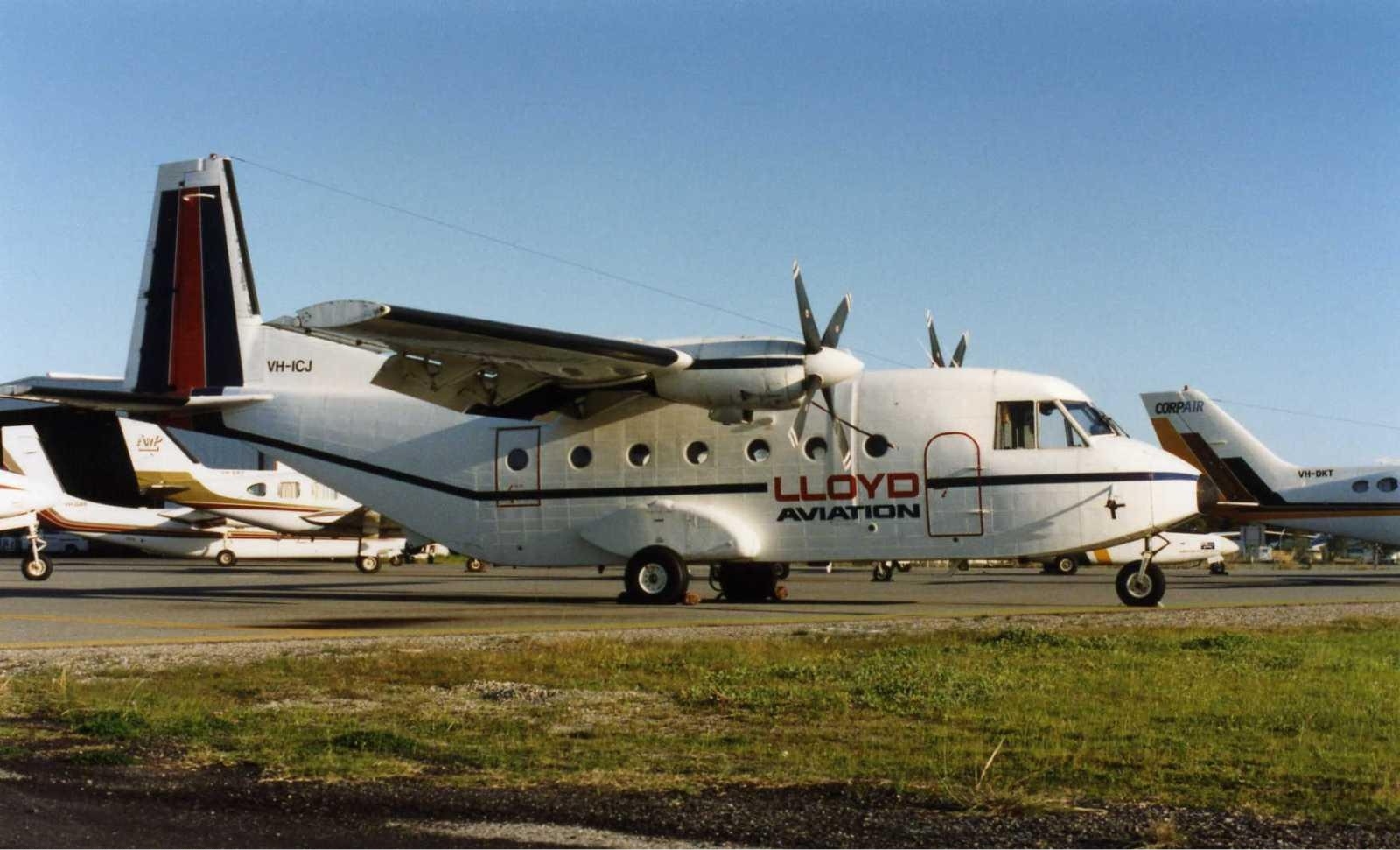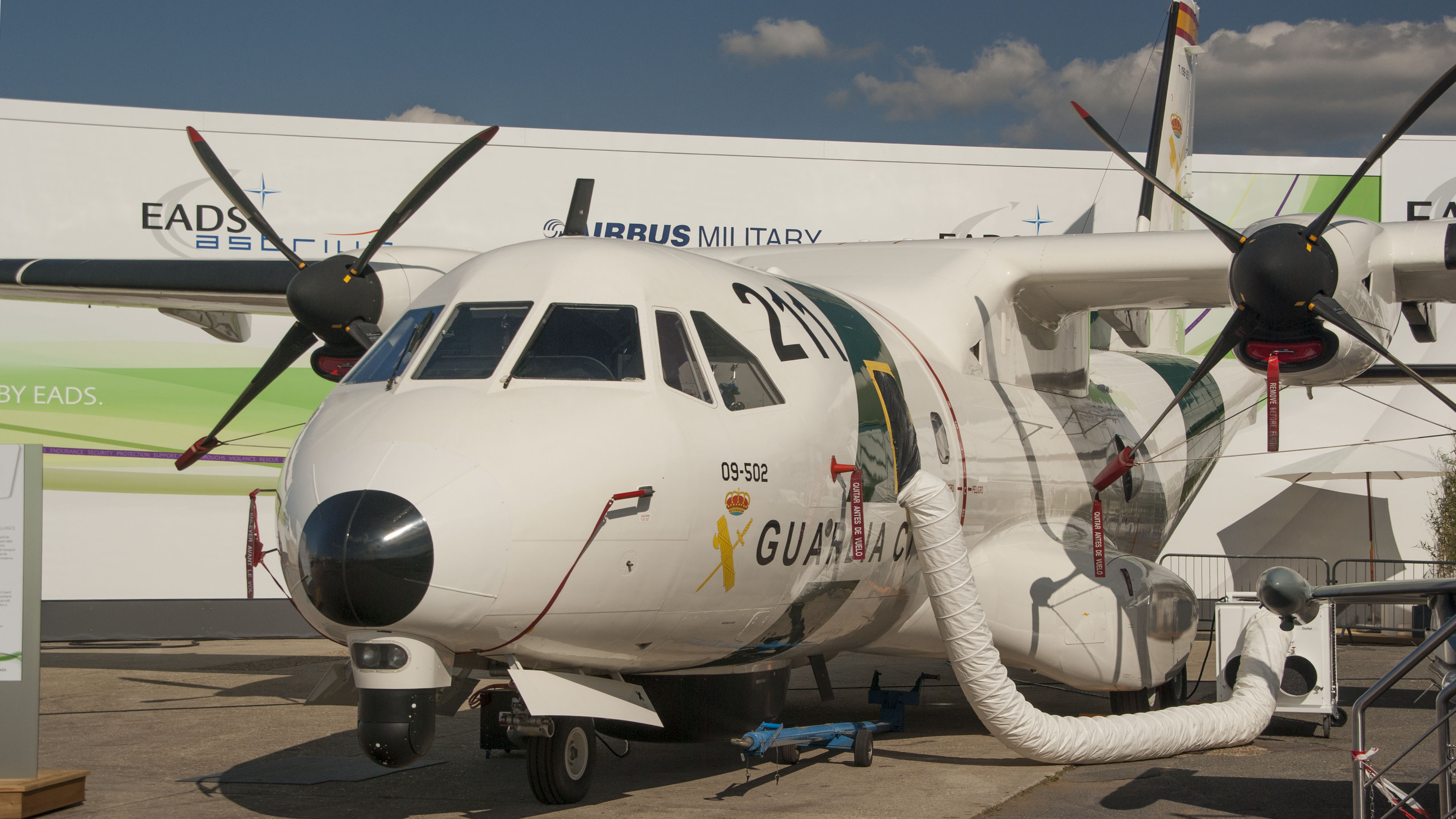
The CASA C-212 Aviocar is a turboprop-powered STOL medium transport aircraft. The outstanding reliability demonstrated by more than three million flight hours makes the C212 the most successful aircraft in the light transport segment for the most varied types of operations.
With a maximum payload of 2.8 tonnes, it was designed to operate in austere environments for long periods of time. Its robustness allows it an absolutely reliable operation in the desert, the jungle o the Antarctic. Its unique STOL performance with low-pressure tires allows unrestricted operations on soft and unpaved fields in hot and high altitude conditions.
The excellent handling qualities and its fast engine response enable the highest level of manoeuvrability at very low altitudes. The C212’s simple design and maintenance reduce the life cycle costs to the lowest level in its segment. The upgraded version, the NC212, launched in November 2012, will be equipped with new digital avionics and autopilot systems and will have a new civil interior for up to 28 passengers, increasing its cost efficiency significantly. This upgrade will keep the NC212 in the light aircraft market as an even more competitive product.
Developing nation: Spain.
Manufacturer/designer: CASA.
Production Lines: San Pablo Airport, in Seville, Spain and Bandung (Indonesia).
Type aircraft: turboprop-powered STOL medium transport aircraft.
First flight: 26 March 1971.
First delivery: May 1974.
Produced: 1971 – 2012.
Number built: 477.
Airbus Military has delivered on 24 January 2013 the last C212-400 assembled in Spain. This delivery marks a moment of Spanish aviation history and the end of more than 40 years of continuous production of the C212 –one of the Spanish best-known aerospace products– at the Airbus Military final assembly line (FAL) in Seville, Spain. Since its maiden flight in 1971, 477 C212 have been built for 92 different operators. Nowadays, 290 C212 remain in service in 40 countries all over the world. The three countries in which there are today most C212s in operation are Indonesia (70 aircraft), USA (37), and Spain (26). This 477th C212 –the third and final C212-400 for the Vietnam Marine Police– was formally delivered on December 28th 2012, ending 42 years of continuous production of the type.
Designed in the late 1960s, the C212 was first delivered to the Portuguese Air Force and the Spanish Air Force in October 1974. After its entry in service, the airlifter became rapidly renowned at a global level for its robustness and reliability. In fact, the C212 has been successfully operated in every corner of the planet –including the Antarctic ice cap. Operators in some of the toughest operating conditions to be found developed enormous affection for its uniquely versatile characteristics and deployed it on an extraordinary variety of roles ranging from transport to rain-making, ultra-sophisticated surveillance to search and rescue. The Design Office of the company eventually developed four different series of the aircraft – culminating in the C212-400, which made its first flight in 1997, in addition to a variety of special mission versions.
Both military and civil operators have benefited from the C212´s versatility and reliability throughout four decades. From now on operators from all over the world will have a new and upgraded version available, renamed as NC212, that will be produced jointly by PT Dirgantara Indonesia and Airbus Military and assembled in Bandung (Indonesia). The Airbus Military final assembly line in Seville will now focus on the production of the C295 and CN235 aircraft in both transport and mission configurations, as well as on the increasing activity on the A400M assembly line.
Variants
Series 100
-
C-212A – Original military production version. Also known as C-212-5, C-212-5 series 100M, and by the Spanish Air Force as the T-12B and D-3A (for medevac aircraft), 129 built.
- C-212AV – VIP transport version, T-12C.
- C-212B – Six pre-production C-212As converted for photo-reconnaissance missions, TR-12A.
- C-212C – Original civil version
- C-212D – Two pre-production C-212As converted for use as navigational trainers, TE-12B.
- NC-212-100 – Manufactured under licence in Indonesia since 1976, IPTN producing 28 NC-212-100s before switching to NC-212-200.
Series 200
- C-212 series 200M – Military version known as T-12D in Spanish service and Tp 89 for the Swedish Air Force. Specialised ASW and maritime patrol aircraft have been built from this version.
- NC-212-200 – C-212-200 built under licence by IPTN.
- NC-212-200 MPA – C-212-200 built under licence by IPTN, Designed as Maritime Patrol Aircraft
Series 300
Standard production version from 1987 on. Engines were Honeywell TPE331-10R-513C, also rated at 900 shp (670 kW) continuous (925 shp maximum). The propellers were changed from four-bladed Hartzell composite blade propellers to four-bladed Dowty-Rotol all-metal propellers. Winglets and a larger vertical stabilizer area provide improved performance, and the addition of a nose baggage compartment gives the nose a more streamlined look than the Series 200. Various systems have been incrementally upgraded, including the addition of an integrated autopilot system.
- C-212-M series 300 (Series 300M) – Military version.
- C-212 series 300 airliner – 26 seat regional airliner.
- C-212 series 300 utility – 23 seat civil utility version.
- C-212 series 300P – Civil utility version with Pratt & Whitney Canada PT6A-65 engines
Series 400
Upgraded version with 925 shp (690 kW) TPE331-12JR-701C engines, increased payload and upgraded avionics moved from under the floor to the nose. First flew 4 April 1997, replacing Series 300 in production from 1998.
Military operators
- Abu Dhabi – Abu Dhabi Air Force 4
- Angola – Angolan Air Force
- Argentina – Argentine Coast Guard 5 – Argentine Army Aviation 1
- Bolivia – Bolivian Air Force 1 Bolivian Army
- Bophuthatswana -Bophuthatswana Air Force 1.
- Botswana – Botswana Defence Force
- Chad – Chadian Air Force 2
- Chile – Chilean Air Force 6– Chilean Army 1 – Chilean Navy 4
- Colombia – Colombian Air Force – National Army of Colombia – Colombian Navy – SATENA 9
- Dominican Republic – Dominican Republic Air Force
- Djibouti – Djibouti Air Force
- Ecuador – Ecuadorian Army
- Equatorial Guinea – Equatorial Guinea Air Force
- France – French Air Force 5
- Indonesia – Indonesian Air Force – Indonesian Army – Indonesian Navy
- Jordan – Royal Jordanian Air Force 4
- Lesotho – Lesotho Defence Force 2
- Mexico – Mexican Navy 8
- Malta – Air Wing of the Armed Forces of Malta 1
- Nicaragua – Nicaraguan Air Force – 4
- Panama – Panamanian Air Force 6
- Paraguay – Paraguayan Air Force – four C.212-200 and one C.212–400
- Portugal – Portuguese Air Force – 24
- South Africa – South African Air Force
- Spain – Spanish Air Force 80
- Sweden – Swedish Navy 1
- Thailand – Royal Thai Army
- Transkei – Transkei Defence Force 2
- United States – United States Air Force as C-41A – United States Coast Guard
- Uruguay – Uruguayan Air Force 5
- Venda – Venda Defence Force
- Venezuela – Venezuelan Navy
- Vietnam – Vietnam Marine Police 3
- Zimbabwe – Air Force of Zimbabwe – 11
General characteristics
- Crew: Two (pilot and co-pilot)
- Capacity: 26 passengers (civil version), 24 paratroops or 2,700 kg (5,952 lb) cargo
- Length: 16.20 m (53 ft 1¾ in)
- Wingspan: 20.28 m (66 ft 6½ in)
- Height: 6.30 m (20 ft 8 in)
- Wing area: 41.0 m² (441 ft²)
- Airfoil: NACA 653-218
- Aspect ratio: 10.0:1
- Empty weight: 3,780 kg (8,333 lb)
- Max. takeoff weight: 7,700 kg (16,975 lb)
- Powerplant: 2 × Garrett AiResearch TPE-331-10R-513C turboprop engines, 617 kW (900 shp) each
Performance
- Maximum speed: 370 km/h (200 kts, 230 mph)
- Cruise speed: 300 km/h (162 knots, 186 mph) (econ cruise)
- Stall speed: 145 km/h (78 knots, 90 mph)
- Range: 1,811 km (978 nmi, 1,125 miles) econ cruise, max fuel
- Service ceiling: 7,925 m (26,000 ft)
- Rate of climb: 8.3 m/s (1,630 ft/min)
Armament
- Up to 500 kg (1,100 lb) of weapons on two hardpoints. Typically, machine gun pods or rocket launchers.
All pictures courtesy of Zijde Aviation Photo and Publishing, Rob Vogelaar / Marcel van Leeuwen


